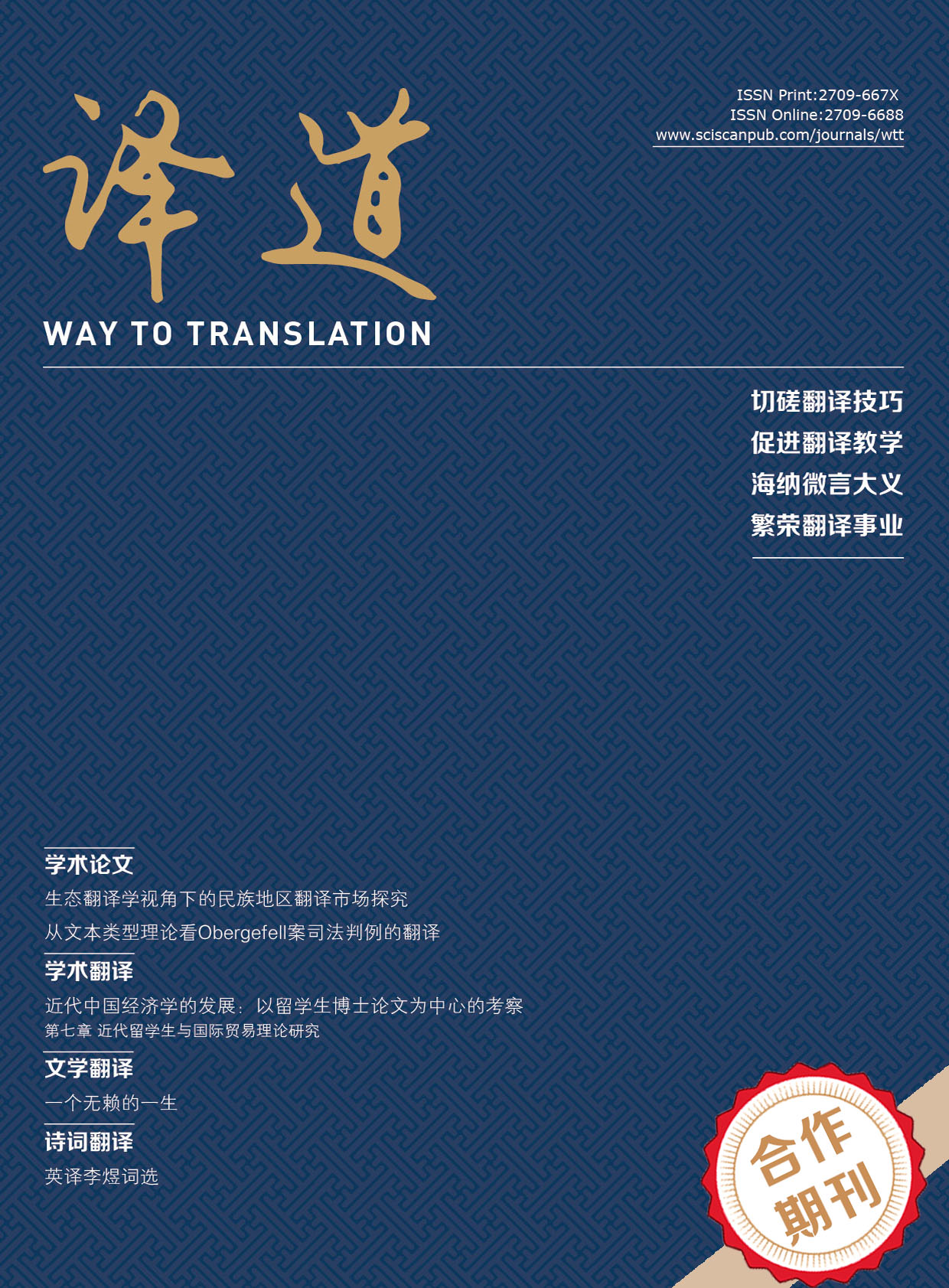免费订阅世刊出版平台最新发表资讯
译者性别身份与翻译诠释:《面纱》三个译本中的性别形象再现
A Study of Translator’s Gender Identity in Literary Translation from the Perspective of Steiner’s Hermeneutic Translation Theory—With the Re-portrayal of Gender Images in Three Chinese Versions of The Painted Veil as An Example
- 作者: 夏慧
-
单位:
中南财经政法大学外国语学院,武汉
- 关键词: 性别身份;文学翻译;翻译诠释学;形象再现
- Gender identity; Literary translation; Hermeneutics; Character re-portrayal
- 摘要: 译者作为文本再创作的主体,其性别身份在翻译过程中发挥着重要作用。在文学翻译中,这种性别身份还会对译者的翻译策略选择产生影响,从而使译作中的女性主义表达或性别形象塑造出现不同程度的变化。毛姆在《面纱》中塑造了性格鲜明的女性角色和男性角色,展现出了强烈的男权主义与女性意识对比,呼吁女性实现自我独立。然而,不同性别的译者在还原小说中的男女角色形象时出现了显著差异,女性形象在男性译者的译文中并未受到公平对待,说明译者的性别身份会对译文中男女形象的刻画产生潜移默化的影响。译者需要摆脱性别身份的局限,主动建立性别意识,发掘人物细微的情感变化,使用不同的性别语言平等地对待原作中的每一个人物,从而更加准确地传达原作思想。
- As the re-creator of the texts, translator’s gender identity plays a vital role in translation process. In literary translation, it can exert significant influence on translator’s strategy choices as well, thus leading to varying degrees of alteration in feminist connotations or gender portrayals in translated works. In The Painted Veil, Maugham portrayed distinct female and male characters, depicting a patriarchal society wherein men represent power and women embody repressed female consciousness. However, notable discrepancies emerged between translators of different genders in reproducing the portrayals of the same male and female characters in the novel. Female characters are undervalued in translations by male translators. This suggests that translator’s gender identity can subconsciously influence the re-portrayal of gender images in translation. Translators shall move beyond the constraints of their gender identity, proactively cultivate gender awareness to explore the subtle emotional changes of characters, and employ gender-inclusive language to treat every character in the source text equitably, thereby conveying the ideas of source text more accurately.
- DOI: https://doi.org/10.35534/wtt.0303003
- 引用: 夏慧.译者性别身份与翻译诠释:《面纱》三个译本中的性别形象再现[J].译道,2023,3(3):14-19.














